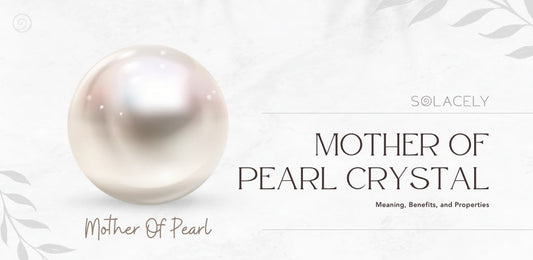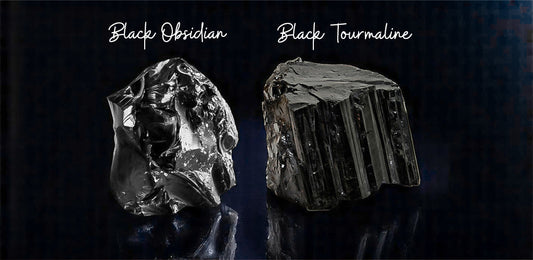Understanding Singing Bowls
Singing bowls, long revered for their soothing sounds and healing properties, have become increasingly popular in various wellness practices. Let's delve into their origins and learn about the different types that exist.
Origins of Singing Bowls
Singing bowls are believed to have originated in the Himalayan regions of Nepal, Tibet, and India. They have been used for centuries as a tool for healing and spiritual practices, including meditation and prayer. The unique blend of metals, including copper, silver, and gold, gives these bowls distinctive sound and vibrational qualities. The captivating sound they produce can transport you to a place of inner peace and tranquility.
Types of Singing Bowls
Singing bowls can be made of various materials and come in different shapes and sizes, each producing unique sound and vibrational properties. The material of a singing bowl significantly affects its sound and vibrations.
The most common types of singing bowls include:
- Metal Singing Bowls: These are traditional bowls made from a blend of seven metals, each corresponding to a planet in our solar system. The metals include gold (Sun), silver (Moon), copper (Venus), iron (Mars), tin (Jupiter), mercury (Mercury), and lead (Saturn). Visit our Metal Singing Bowl page for more information.
- Crystal Singing Bowls: Made from crushed quartz, these bowls produce a clear, smooth sound that resonates strongly with our bodies due to the high water content in our cells. Learn more about them on our Crystal Singing Bowl page.
- Tibetan Singing Bowls: Also known as Himalayan bowls, these are hand-hammered from a blend of metals. Each bowl produces multiple harmonic overtones at the same time. Discover more about these on our Tibetan singing bowl page.
- Handmade Singing Bowls: These are carefully handcrafted by skilled artisans, making each piece unique in its sound and appearance. Explore these on our handmade singing bowl page.
Choosing the suitable singing bowl depends on personal preference and the specific purpose for which it will be used, whether meditation, relaxation, or sound therapy. Understanding the origins and types of singing bowls can guide this choice and enhance the experience of using these remarkable instruments for healing and well-being.
The Science Behind Singing Bowls
The underlying science of singing bowls is fascinating and contributes to their increasing popularity in sound therapy and meditation practices. Central to their effectiveness are vibrations and their impact on the nervous system.
The Role of Vibrations
Singing bowl therapy, a famous sound therapy, uses metal bowls to produce vibrations and sound waves. These can positively impact the chakra system, aligning and balancing energy centers within the body.
The vibrations produced by a singing bowl are audible and can also be felt physically. They ripple through the body, interacting with the biomolecular structure. This vibratory effect can influence cellular functions and promote healing at a cellular level. The sound waves, on the other hand, interact with our auditory systems, leading to a deep sensory experience and potential shifts in brainwave states.
Impact on the Nervous System
The calming effect of the vibrations and sound waves produced by singing bowls can influence the nervous system significantly. They can stimulate the relaxation response and inhibit the stress or pain response. This can lead to feelings of deep relaxation and a state of meditation, making singing bowls an effective tool for stress reduction and mood enhancement.
In a study, singing bowl sound meditation significantly reduced feelings of tension, anger, fatigue, and depressed mood. Notably, participants new to this type of meditation experienced a more significant reduction in stress. Additionally, a sense of spiritual well-being significantly increased in all participants after the singing bowl sound meditation, indicating its potential for promoting overall well-being and relaxation.
Understanding the science behind singing bowls can deepen your appreciation for this ancient tool and enhance your experience, whether using a Tibetan singing bowl, a crystal singing bowl, or any other type of singing bowl. By incorporating singing bowls into your wellness routine, you can harness the power of vibrations for healing, relaxation, and a greater sense of well-being.
Chakras and Singing Bowls
Understanding the relationship between chakras and singing bowls is crucial to leveraging the therapeutic benefits of sound healing. Let's delve into an overview of chakras and explore how singing bowls can be used for chakra balancing.
Overview of Chakras
Chakras are energy centers located in specific body parts, with seven primary chakras along the center channel of the body and hundreds of subtle body/minor chakras elsewhere in the body and around the body's energy field. These chakras facilitate a harmonious energy flow within the body and are associated with specific elements, symbols, gemstones, and musical notes.
Each chakra correlates to different areas of the body, organ systems, and neural networks. When your system's chakra energy remains balanced, you achieve emotional, physical, and spiritual balance.
Chakra Balancing with Singing Bowls
Singing bowls, like the ones you can find here singing bowls, are commonly used for chakra balancing and energy healing. They can interact with the unbalanced chakras and cause them to self-correct through the sound waves they create. Chakra balancing with singing bowls restores a harmonious energy flow to the chakra system.
Different singing bowls, such as crystal singing bowls, can be used to tune the chakras. Lower tones are believed to work for lower chakras, while higher tones work for higher chakras. Singing bowls can be selected based on the specific chakra that needs healing, and there are bowls available that are tuned to particular notes on the C major scale for each chakra.
One can leverage the benefits of this ancient healing practice by understanding the role and functions of chakras and how singing bowls can be used to balance them. Whether new to sound healing or a seasoned practitioner, singing bowls can be a powerful tool in promoting balance, harmony, and wellness in your life. For more about the benefits of singing bowl therapy, visit Singing Bowl Benefits.
Singing Bowl Therapy
Singing Bowl Therapy, a form of sound therapy, employs metal bowls to produce vibrations and sound waves, impacting the chakra system positively. This ancient practice has numerous benefits, from reducing stress to promoting deep relaxation and meditation.
Benefits of Singing Bowl Therapy
The benefits of Singing Bowl Therapy go beyond the physical. Research shows this therapy can significantly reduce stress, improve mood, and enhance relaxation. The soothing vibrations and sound waves produced by the singing bowls calm the nervous system, promoting deep relaxation.
A study indicated that Singing Bowl Sound Meditation significantly reduced feelings of tension, anger, fatigue, and depressed mood compared to pre-meditation levels. Interestingly, participants new to this type of meditation experienced a more significant tension reduction than experienced participants. Moreover, all participants reported a substantial increase in spiritual well-being after the Singing Bowl Sound Meditation.
Singing Bowl Meditation
Singing Bowl Meditation is an integral part of Singing Bowl Therapy. The meditative process involves striking the singing bowl in a manner that produces soothing sounds and vibrations. These vibrations are believed to sync with the body's natural frequencies, promoting deep relaxation and healing.
Singing Bowl Meditation is an effective tool to manage stress, anxiety, and depression. It helps achieve a calm and focused state of mind, thus enhancing mindfulness and well-being. Moreover, it is considered beneficial for grounding and manifestation.
Interested in trying Singing Bowl Meditation? Visit our guide on singing bowl meditation to learn how to incorporate this therapeutic practice into your daily routine. Remember, with regular practice, you can maximize the benefits of this ancient healing art and enhance your overall well-being.
Different Chakras and Corresponding Notes
Understanding the link between the different chakras and their corresponding notes can enhance the healing power of singing bowl chakra therapy. This section will explore the lower and higher chakras and their associated musical notes.
Lower Chakras and Corresponding Notes
The lower chakras consist of the Root, Sacral, and Solar Plexus chakras. These chakras are linked to physical existence, emotions, and personal development.
- Root Chakra: Located at the base of the spine, the Root Chakra is associated with emotional and mental stability, prosperity, and health. It is represented by the color red and the musical note C.
- Sacral Chakra: Positioned in the middle of the abdomen, between the navel and the pubic bone, the Sacral Chakra connects to sexuality, relationships, and creativity. The color orange and the musical note D depict it.
- Solar Plexus Chakra: Located in the upper abdomen, between the breastbone and the navel, the Solar Plexus Chakra is linked with emotions, self-esteem, autonomy, and determination. It is represented by the color yellow and the musical note E.
Higher Chakras and Corresponding Notes
The higher chakras include the Heart and Throat chakras. These chakras relate to our connections and ability to communicate our thoughts and feelings.
Heart Chakra: Positioned in the center of the chest, the Heart Chakra is associated with compassion, friendship, empathy, and the ability to create more love in life. It is represented by green (sometimes pink) and the musical note F.
Throat Chakra: Located at the base of the throat, the Throat Chakra links to communication, self-expression, and speaking one's truth. It is represented by the color azure blue and the musical note G.
Understanding these connections can enhance the healing power of singing bowl chakra therapy. One can target areas of imbalance or tension by focusing on the specific notes associated with each chakra, promoting healing and restoration. This is one of the many singing bowl benefits that contribute to holistic wellness.
Using Singing Bowls for Healing
Singing bowl therapy, or sound bowl therapy, is a form of sound healing that uses the vibrations and sounds produced by singing bowls to promote healing and well-being. The benefits of this therapy extend to both physical and emotional spheres, making it an all-encompassing healing technique.
Physical Health Benefits
The use of singing bowls can yield a range of physical health benefits. According to Aura Health, these benefits include improved focus and concentration, reduced blood pressure, increased energy levels, enhanced creativity, and improved digestion.
A study cited by the National Center for Biotechnology Information found that singing bowl sound meditation significantly reduced feelings of tension, anger, fatigue, and depressed mood. Participants new to this type of meditation experienced a more significant tension reduction than experienced participants.
Moreover, stress and tension, which are effectively addressed by singing bowl therapy, have been linked to severe health conditions such as heart disease, diabetes, addiction, and mental health issues. It follows that singing bowls can contribute to improving physical health by alleviating these stress-related conditions.
Emotional and Spiritual Benefits
In addition to the physical benefits, singing bowl therapy provides emotional and spiritual benefits. These include chakra balancing and energy clearing, aiding in meditation and mindfulness, facilitating emotional release and self-discovery, and connecting to higher consciousness.
Furthermore, the earlier study found that feelings of spiritual well-being significantly increased in all participants after the singing bowl sound meditation. This indicates that singing bowl therapy can aid individuals in their spiritual journey, fostering a deeper connection with their inner self and the universe.
In conclusion, singing bowls for healing can provide many physical, emotional, and spiritual benefits. It's a holistic therapy that addresses various aspects of a person's well-being, promoting overall health and harmony.








